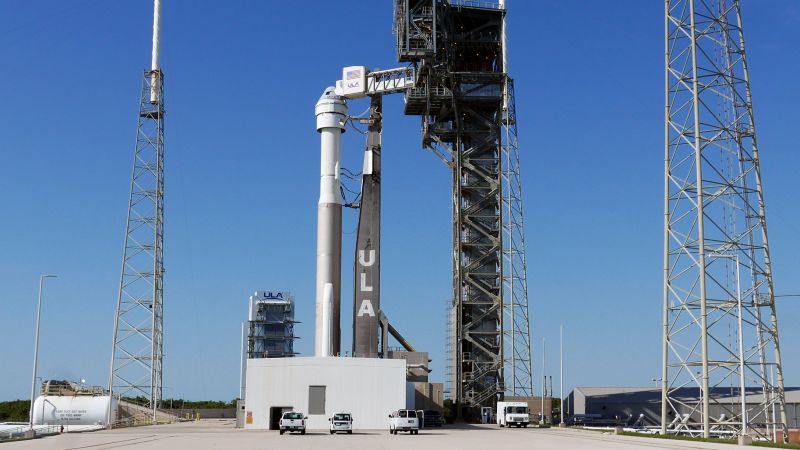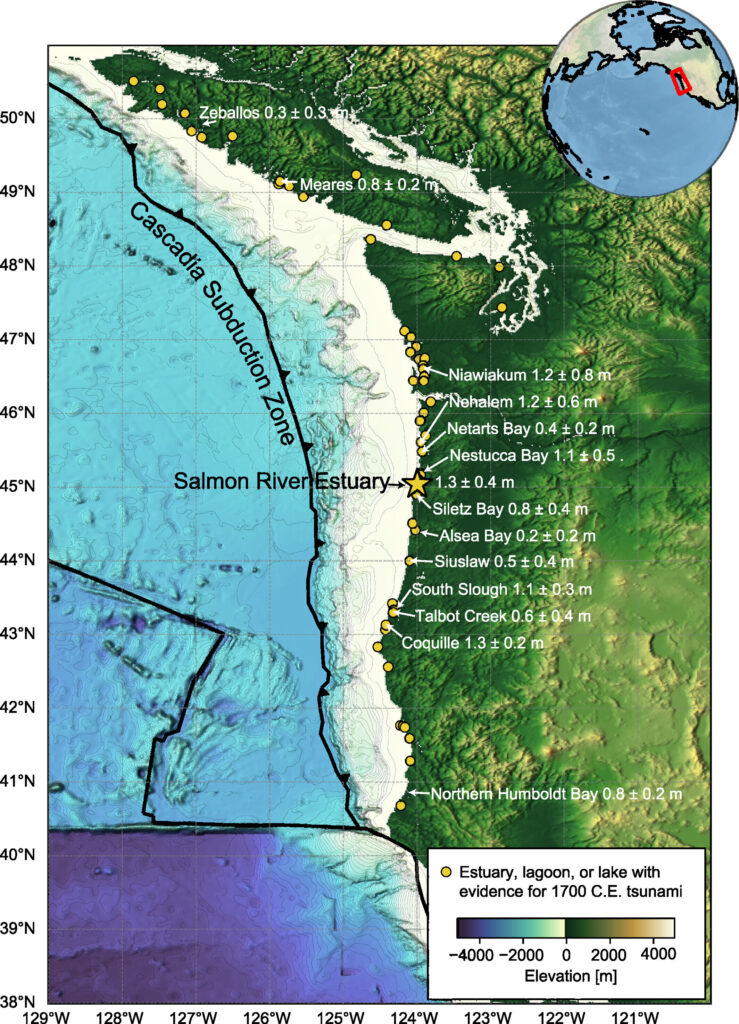Editor’s Note: Editor’s Note: Follow along with CNN’s live updates of Boeing Starliner launch.
CNN
–
Boeing’s Starliner is set to launch its first crewed flight on Saturday, a decade-long mission.
The new spacecraft is expected to lift off atop an Atlas V rocket at 12:25 pm ET from the Cape Canaveral Space Force Station in Florida. Live streaming of the event began at 8:15 a.m. ET on NASA’s website.
Veteran NASA astronauts Butch Wilmore and Suni Williams will be on board.
Weather conditions are 90% favorable for launch, with the only concerns being winds and cumulus clouds, according to Mark Burger, launch weather officer for the 45th Weather Squadron at Cape Canaveral Space Force Station.
Around 10 a.m. ET, mission teams reported a loss of data from the ground valves responsible for refueling liquid oxygen and hydrogen in the second or upper stage of the Atlas V rocket. Both liquid oxygen and hydrogen, used for rocket fuel, boil off as the rocket lands on the pad before launch, so refueling continues until liftoff.
After evaluating the issue, which prevented the hatch from closing after the astronauts entered the crew capsule for about 45 minutes, the mission teams switched to a redundant valve data system. The crews then resumed refueling with hydrogen and liquid oxygen. Fortunately, the mission teams were ahead of schedule when the problem occurred, and the countdown to launch has resumed, according to NASA’s live stream.
The valve issue did not cause any safety concerns for the crew, and the hatch on the Starliner was closed around 11:20 a.m. ET.
The mission, called the Crew Flight Test, is the culmination of Boeing’s efforts to develop a spacecraft to rival SpaceX’s Crew Dragon capsule and expand U.S. options for transporting astronauts to the space station under the Commercial Crew Program. NASA. The federal agency’s initiative aims to foster collaboration with private industry partners.
If successful, the flight would mark just the sixth inaugural flight of a crewed spacecraft in US history, NASA Administrator Bill Nelson noted at a press conference in May.
“It started with Mercury, then Gemini, then Apollo, Space Shuttle, then (SpaceX’s) Dragon — and now Starliner,” Nelson said.
Williams will also make history as the first woman to fly such a mission.
Once in orbit, the Starliner crew capsule carrying Wilmore and Williams will separate from the Atlas V rocket and fire its engines. Starliner is expected to spend more than 24 hours traveling to the International Space Station, with docking expected to occur at 1:50 p.m. ET on Sunday.
Astronauts will test various aspects of Starliner’s capabilities, including the performance of the shuttle’s thrusters, how their spacesuits work inside the capsule, and manual piloting in case the crew needs to override the shuttle’s autopilot.
Joe Skipper/Reuters
NASA astronauts Suni Williams (left) and Butch Wilmore pose before launch.
The pair of astronauts will join seven astronauts and cosmonauts already aboard the space station and will spend eight days in the orbiting laboratory.
The astronauts will test Starliner’s “safe haven” capability, designed to provide the space station crew with a shelter if there is a problem on the space station, according to Steve Stich, manager of NASA’s Commercial Crew Program, of who spoke during a press conference on Friday.
When it’s time to head home, Williams and Wilmore will return using the same Starliner capsule and land in an area in the southwestern United States.
The earliest possible return for Williams and Wilmore is June 10, but other dates are available in case of inclement weather, Stich said.
If the spacecraft does not lift off as planned on Saturday, there are backup launch options on June 2, June 5 and June 6, according to NASA.
Years of development downtime, test flight problems and other costly hurdles have slowed the Starliner’s path to the launch pad. Meanwhile, Boeing’s competitor under NASA’s commercial program – SpaceX – has become the main transportation provider for the space agency’s astronauts.
This mission could be the last major milestone before NASA deems Boeing’s Starliner spacecraft ready for routine operations to deliver astronauts and cargo to the space station.
“We look forward to flying this mission. This is a test flight; we know we’re going to learn things,” Mark Nappi, vice president and program manager of the Commercial Crew Program at Boeing, said in a statement. “We’re going to improve, and that improvement starts with the Starliner-1 mission and it’s going to be even better than the mission we’re going to fly.”
The Starliner was only about two hours away from its first crewed launch attempt on May 6 when engineers identified a problem with a valve in the second stage, or upper section, of the Atlas V rocket. The entire assembly, including the rocket and spacecraft spacecraft, was withdrawn from the launch base for testing and repairs.
Afterwards, the mission teams reported a small helium leak inside the spacecraft’s service module. The leak was traced to a part called a flange on a single thruster of the feedback control system, where helium is used to allow the thrusters to ignite.
The space agency said the leak did not pose a threat to a mission.
“We looked very hard at what our options were with this particular flange,” he said. “A fuel line, an oxidizer line, and a helium line all go into the flange, which makes the job problematic. It makes it almost unsafe to work.”
Instead of doing a replacement to fix the leak, crews decided the helium leak was small enough to be manageable, Stich said.
“When we looked at this problem, it didn’t come to trade,” Nappi said. “It came down to ‘is it safe or not?’ And it’s safe. And that’s why we decided we could fly with what we have.”
During the countdown to launch on Saturday morning, mission teams monitored the leak and so far, no problems have been reported. Teams have spent the past two weeks evaluating acceptable levels for helium leakage and troubleshooting, which are set out in the regulation that engineers will use, Nappi said.
While assessing the helium issue on launch day, engineers also noted a “design vulnerability” in the propulsion system — essentially identifying a remote scenario in which some thrusters could fail as the vehicle leaves Earth’s orbit, without a backup method of getting home safely.
NASA and Boeing have since been working with the propellant vendor to create a backup plan to perform the deorbit burn should that situation arise, Stich said at a May 24 press conference.
“We’ve restored that redundancy for spare capability in a very remote set of direct burn failures,” Stich said.
After a flight readiness review meeting on May 29, leaders from NASA, Boeing and United Launch Alliance, which built the rocket, “verified launch readiness, including all systems, facilities and crews that support the test flight,” according to the agency. spatial.
Mission teams also got an up-close look at Starliner’s parachutes after a parachute on Blue Origin’s last suborbital crew flight failed to fully inflate. The Starliner uses components that are similar to that parachute system, Stich said.
Blue Origin shared flight data with Boeing and NASA, and after evaluating the Starliner’s parachutes, the team deemed them “good to fly.”
The space station experienced an anomaly Wednesday that Starliner can help fix, said Dana Weigel, manager for NASA’s International Space Station Program.
A pump in the station’s urine processor assembly has failed.
“That urine processor takes all of the crew’s urine and processes it in the first step of a water recovery system,” Weigel said. “It then sends it downstream to a water processor which turns it into drinking water. The station is really designed to be a closed loop.”
The pump was expected to operate until the fall, and a replacement was set to fly aboard a cargo resupply mission scheduled for August. But the pump failure “put us in a position where we would have to conserve a lot of urine,” Weigel said.
Now, urine must be stored on board in containers. To solve this problem, a replacement pump was quickly swapped into the Starliner’s payload. The pump weighs about 150 pounds, so the team removed two crew suitcases from the Starliner that held clothes and toiletries such as shampoo and soaps handpicked by Wilmore and Williams.
There is an emergency supply of generic clothes and toiletries on the space station that the pair of astronauts will use instead for their short stay, Weigel said.
Wilmore and Williams have been in crew quarantine to protect their health before launch since late April, said NASA astronaut Mike Fincke, who is scheduled to serve as pilot for the upcoming Boeing Starliner-1 mission that will followed by a successful test flight.
“Butch and Suni have every confidence in our rocket, our spacecraft and our operations teams and leadership management teams, and they’re definitely ready to go,” he said.
Sign up for CNN’s Science of Miracles newsletter. Explore the universe with news of fascinating discoveries, scientific advances and more.
CNN’s Deblina Chakraborty contributed to this report.




